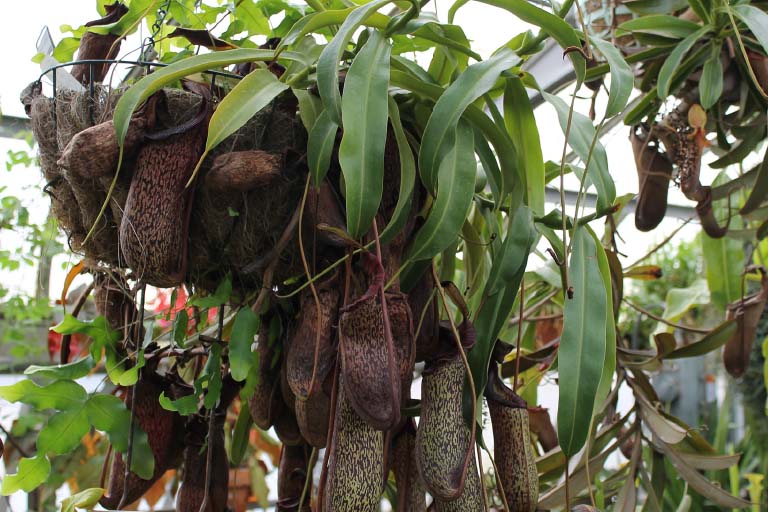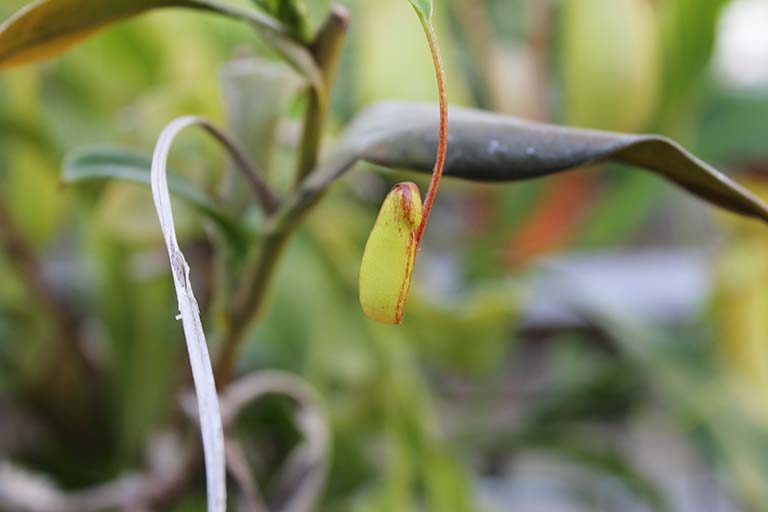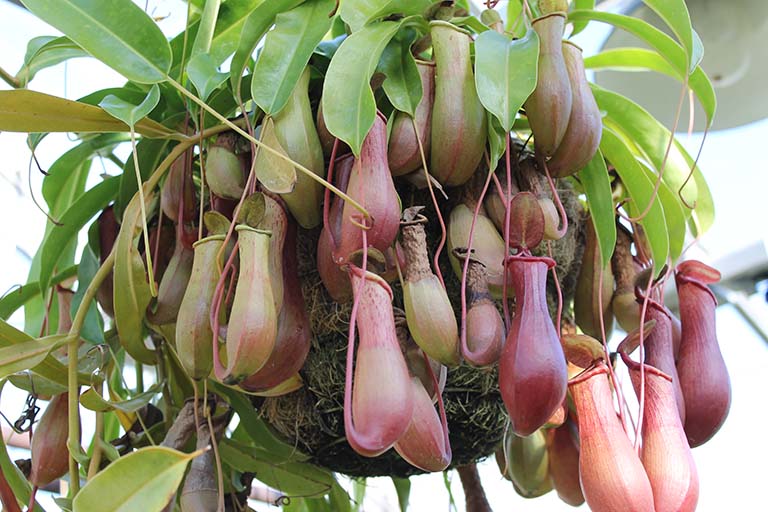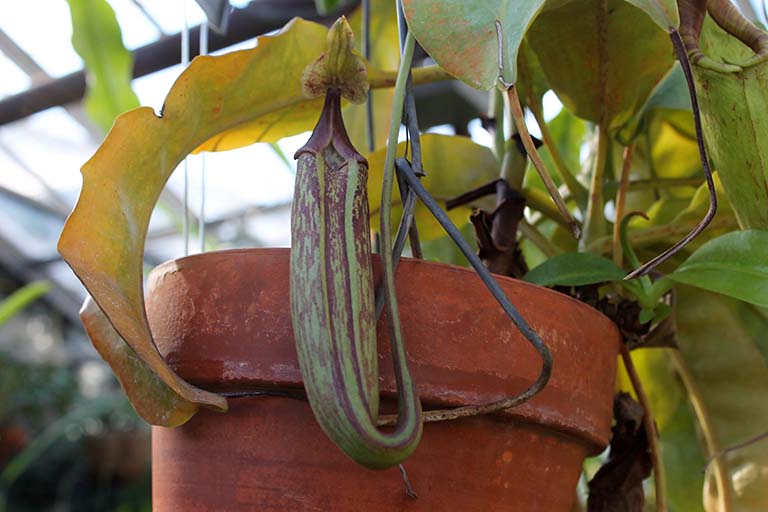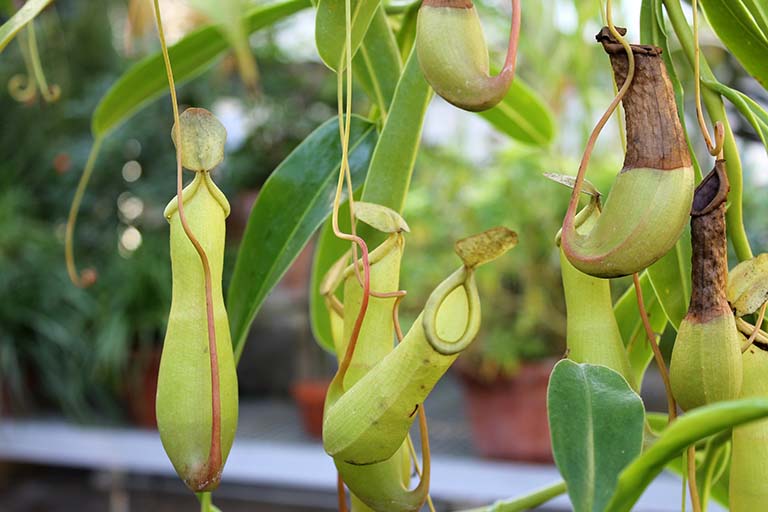Family: Nepenthaceae
Scientific name:Nepenthes species
Common name: Tropical pitcher plant
Native of: Old World tropics (largest number of endemic species occurs in Bornea, Sumatra, and Philippines)
Greenhouse location: Room F
Family: Nepenthaceae
Scientific name:Nepenthes species
Common name: Tropical pitcher plant
Native of: Old World tropics (largest number of endemic species occurs in Bornea, Sumatra, and Philippines)
Greenhouse location: Room F

Nepenthes' shallow root system sends up a climbing stem with alternate, sword-shaped leaves. A tendril (extension of leaf midrib) extends from the tip of the leaf. A pitcher starts as a small bud at the end of the tendril and expands into a globe- or tube-shaped trap.
The peristome (or lip) encircles the upper part of the trap. It is often colorful, attracting prey to its slippery surface from where the prey slides or falls into the pitcher. Escape is nearly impossible due to the slick, waxy coating along the upper inside of the trap. The plant produces a watery or syrupy fluid used to drown its prey in the trap. In many species, the lid (operculum) above the peristome keeps rain from diluting the digestive fluid within the pitcher. Glands in the lower part of the trap absorb nutrients from captured prey.
Insects are the main diet of Nepenthes, but the largest species are known to occasionally catch small vertebrates—such as rats, lizards, and sometimes even small birds.
Nepenthes is known in some regions as "monkey cups." This moniker comes from monkeys having been observed drinking rainwater from the plant's tube-shaped traps.
Visit our Fun Facts page to learn about about bats who use the pitchers.
Browse the slideshow below for a sampling of Nepenthes species housed in Conservatory Room F of the Jordan Hall greenhouse.
